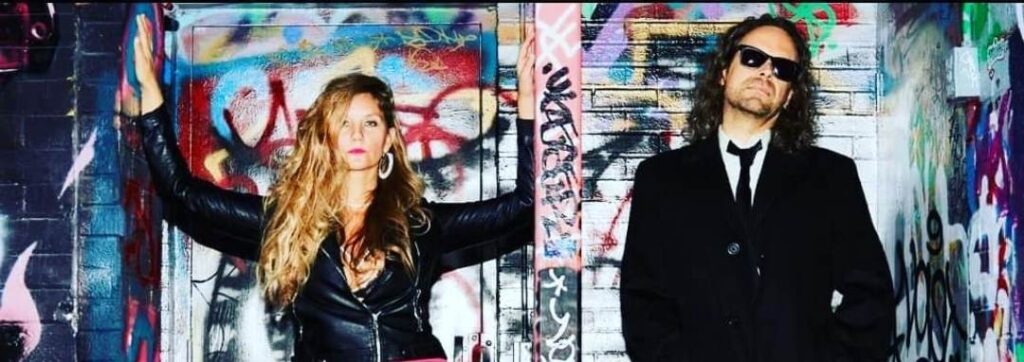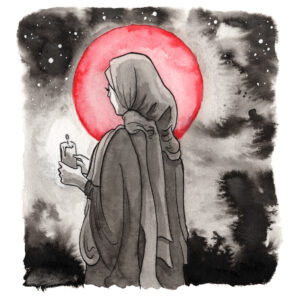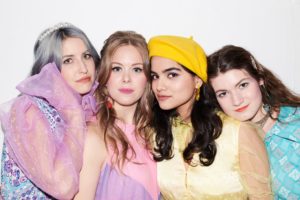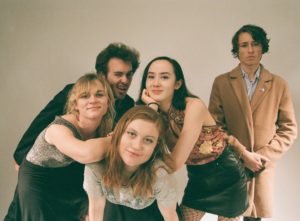
Sara Dishart and Filthy Rich, a passionate songwriting and performance group, recently released their song, Letter to Rajani. The feminist song shines a light on the reality of women living in oppression. Specifically, they describe the song as being against the “oppression of women’s freedoms in education, dress, and their own body — currently at issue in Afghanistan, Iran, and the USA respectively.”
The basis for the song came from their trip to rural north India in 2016. They observed that the roles of shopkeepers, tour guides, and hotel managers were predominately men, whereas women’s roles were in fieldwork or the household. This observation sparked a lot of questions for Sara and Rich which resulted in Letter to Rajani.
The group is interested in making their socially conscious music “gripping rhythmically or melodically”. Sara and Rich write about themes ranging from feminism and environmentalism to existentialism and humanism. They believe if you have something to say and the opportunity and vehicle to do so then why shouldn’t you?
In January 2023, Sara and Rich released Letter to Rajani along with another new single, She Runs Wild. They plan to release both tracks in April as a 7-inch single. Currently, they are working on completing a full album and want to make a video for Letter to Rajani. Additionally, they perform in Blood Roses, a 70s/80s new wave, punk, and rock cover band along with their bassist and drummer.
I recently interviewed Sara Dishart & Filthy Rich in-depth about their single Letter to Rajani including the trip to India that inspired it, their production process for the track, what motivates them to write socially conscious music, how women artists can be better represented in music, and much more.
Congratulations on your latest release, Letter to Rajani. Tell us about the theme of the song and who Rajani represents.
Thank you. We are really proud of the song.
Letter to Rajani is structured as a question, or a hoped-for correspondence between us, two Westerners, travelling for the first time through rural north India (Rajasthan), and the women we saw.
Rajani is a girl’s name. The etymology of Rajani is Sanskrit in origin, meaning dark; shrouded in mystery; or, of the night.
As we traveled by train across dusty Rajasthan, we noticed countless women carrying water from the wells, working flat fields, planting crops and spreading seeds by hand, pulling animals, and even sweeping in the middle of what seemed like endless miles of desert. While these activities can be meaningful and vital contributions to their community, women’s roles seemed to be in the background. Tour guides, shopkeepers, and hotel managers were all predominantly men. Through our observations, we either saw women in domesticated roles, quietly working away doing household chores, or occupied with rural work in the fields. Was this by choice or tradition? What was life like for many of these women? Were they fulfilled? Did they dream of more? These were the questions that arose and became the basis for the song.
Of course, we realized that we were observers. We lacked the full context of the culture we had inserted ourselves into. The song is not meant to be a judgment or a virtue signal. It is a face-to-face interlocution that we wanted, but that we never really received.
What do you hope listeners will take away from the song?
In almost all of human history, women have been oppressed. Women continue to be oppressed today. Lack of equity and equality is systemic and rampant. We hope listeners take away that Letter to Rajani is a call for female voices and stories to be heard. It is a feminist song. We are both feminists.
The lyrics of Letter to Rajani paint such a heartbreaking picture of a woman’s reality of living under oppression. Where did you draw your inspiration from?
Well, our trip to India was in 2016. In light of more recent events around the world, the song has now taken on a more pressing and impassioned call. At the time of recording at the end of 2022, and as it is sung now, the message is precisely about women’s “reality of living under oppression”. You are bang on. Heartbreaking? Yes; and, also unjust and unethical. We see oppression of women’s freedoms around the world right now in Iran, Afghanistan, and the United States. In Afghanistan, higher education for women has been suspended. Think of what this gender apartheid means for their employment future, financial freedom, and political and societal roles. In Iran, 22-year-old Mahsa Amini was killed by the so-called “Morality Police” for improperly wearing her hijab. Women are not free to dress themselves in 2023. And in the U.S., women have lost freedom over their own bodies with the overturning of Roe v Wade.
Sara’s compelling vocals and the melancholy melody embrace each other in an incredibly haunting soundscape. Explain your production process for the song.
That’s very kind. Thank you. We are not production virtuosos by any stretch. Production credit is due in big part to Michael Keire from Threshold Recording Studio in Hamilton, Ontario, Canada. He is a superb engineer and helped us produce both Letter to Rajani and She Runs Wild. We knew what sound we were looking for but he got us there quickly. We wanted a pop-rock sound with a bit of world music feel. The latter was helped a lot by the background vocals that Aly Livingston and Tanya Philipovich provided. Musical friends are the best and these two strong women really helped to elevate and amplify the message behind the song.
 The cover artwork by Ryan Stanley for the song is really moving. Can you tell me how he came up with the idea or was it a collaboration between you?
The cover artwork by Ryan Stanley for the song is really moving. Can you tell me how he came up with the idea or was it a collaboration between you?
We love what Ryan Stanley did for the cover art. He is a phenomenal Canadian artist, not only as a visual artist but also in his musical creations with his wife, Jackie. They are Cursed Arrows and we highly recommend anyone to look them up for all their creative outlets. Their creations are dark and beautiful. The original art that Ryan did for Letter to Rajani, featuring a woman in a hijab, holding a burning candle, captures the hope and spirituality of the song in a single image.
You make socially conscious music ranging from feminism and environmentalism to existentialism and humanism. Tell me about your motivation behind writing about these important themes.
Writing socially conscious music is a tall order for a band and could very well be a recipe for disaster if you take yourself too seriously. Rock music can be fun, a bit of escapism for the musicians and the listeners, and of course, rebellious. It’s even better if bodies can dance to it. But, we all know there is plenty of music out there about waiting for the weekend, about a guy or girl that makes you hot, or about how much it hurt when your heart got broken. So, socially conscious music that is also gripping in other ways – rhythmically or melodically – is what we are interested in making. Not to say you won’t hear a love song from us! But that stage monitor you step up on can also be a bit of a soapbox, without being a pulpit. If something needs to be said and you have an opportunity and vehicle to say it, then why not say it? Being an artist comes with a certain amount of responsibility in our opinion, and so does being a woman in and of this world; or a man, for that matter.
We are both existentialists in so far as we place responsibility, freedom, meaning, and meaninglessness, all in the here and now. We don’t go looking for outside help from transcendent ideals. And, we are both humanists insofar as we take it as our own responsibility to live ethical lives, strive for our own fulfillment, through successes and failures, and treat humans and all sentient creatures with empathy and dignity.
You cite your influences range from new wave and folk to dream pop and punk. How specifically do these genres influence your music?
We love just about all music. There is a season and color for everything. Some we just wouldn’t be any good at, even though we enjoy it. We don’t do prog rock or classical, even though we enjoy Tool and Bach. It’s important to know your strengths and where you can find your voice and hone your talent.
Those genres that you mention are within our capabilities. Or, at least we try. If we can come close to capturing a little of the intelligent hooks of XTC and Talking Heads, the ethereal layers of Cocteau Twins, the protest of Bob Dylan, Ani DiFranco, and Billy Bragg, and the political rebellion and anti-establishment of The Clash, then we’d be very pleased. These are some of our working influences.
(Sara) What does it mean to you personally to be an indie music woman artist?
Personally, being a woman in music means taking up space and inspiring other women who have aspirations to freely express themselves, all the while, being aware of my social location and privilege. It is a privilege to be seen and heard, and with that, comes a responsibility to speak about certain issues – especially ones that others may be killed or imprisoned for. I do not take that lightly. I choose to use my voice in an authentic and meaningful way, to create awareness or stimulate dialogue about issues that might otherwise be difficult to discuss.
Art can be beautiful and political, reassuring and shocking, thought-provoking and meditative. Music brings lots of different people together. That is so special to me. Also, I feel compelled to challenge the social norms around ageism in the industry. I don’t think women should just disappear at a certain age. That’s bull. Some of my most favorite female artists (Patti Smith, Deborah Harry, Ani DiFranco, Kate Bush, Sarah Harmer, Jenn Grant, Martha Wainwright, Kathleen Edwards, and Stevie Nicks) are still committed to their craft and I think they are getting better with each year that passes.
How do you think women artists can be better supported in the indie music industry?
We can honor women in music at any age.
Governments can protect the arts to ensure that there are grants and low-barrier access to music programs in schools and communities for people from a wide variety of socio-economic backgrounds.
I’d like to see more women enter the sound engineering field. There is still a lot of sexism in the music industry and I have fallen into that trap of not feeling safe as a woman taking my songs into a studio. That’s a shame and this could be a career-ending experience for some women.
What you, Linda, and the rest of the Indie Music Women are doing here is very important. Reviews, interviews, submissions, playlists, tips, and resources for women in the industry. Fantastic. We are happy to have found you and receive your interest and support.
What other projects do you have planned for this year?
Letter to Rajani and She Runs Wild make up the A and B sides of our 7-inch vinyl. We want to get a video done for Letter To Rajani. What comes next is finishing the full album. We have a few more that we need to finish writing with our bassist and drummer, Martin Von Wuthenau and Cleave Anderson. We owe a lot of thanks to both of them as well. We hope to be back in the studio by year’s end. In addition to the Sara Dishart and Filthy Rich album, we also play in a 1970s / ’80s new wave, punk, and rock cover band called, Blood Roses. Martin and Cleave are also in that band too, which is a whole lot of fun playing some of our favorite music.
Thank you, Sara & Rich, for the opportunity to interview you.
You can follow Sara & Filthy Rich on Facebook YouTube and their Spotify Artist Page.
Listen to Letters to Rajani here


